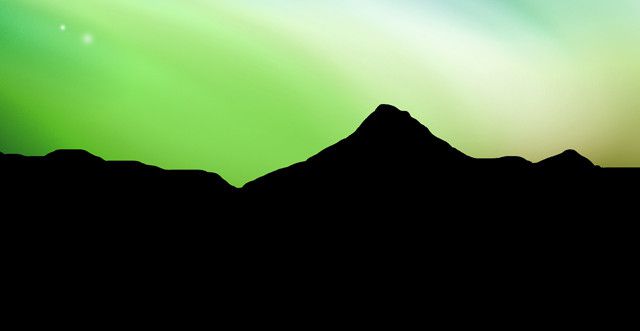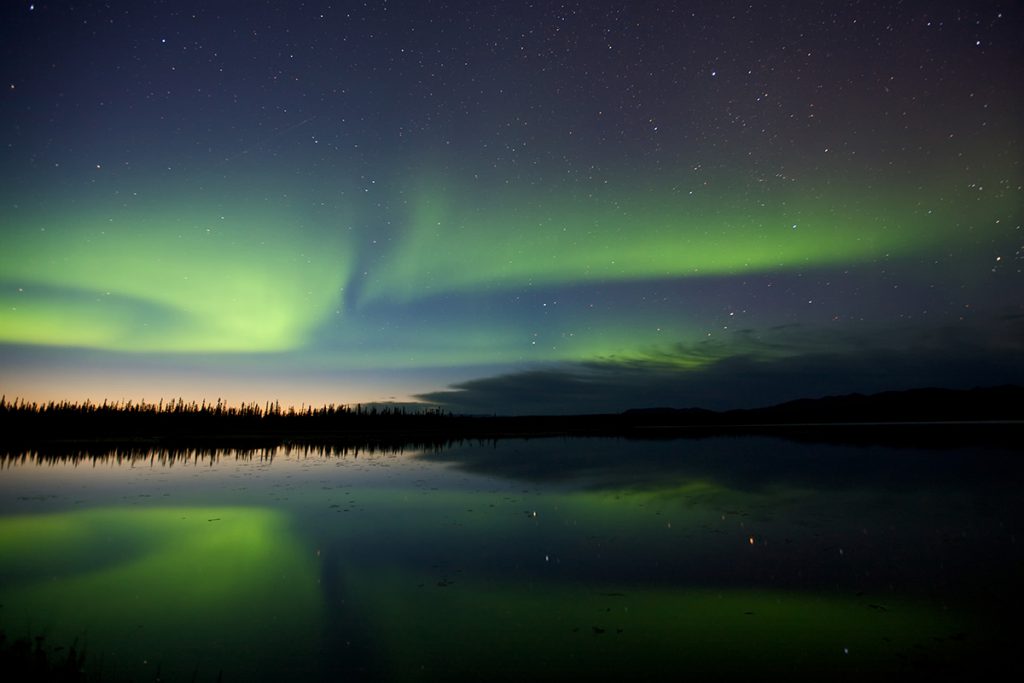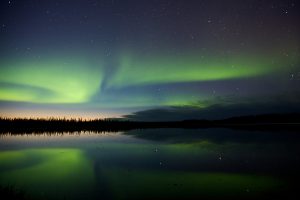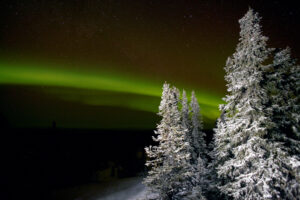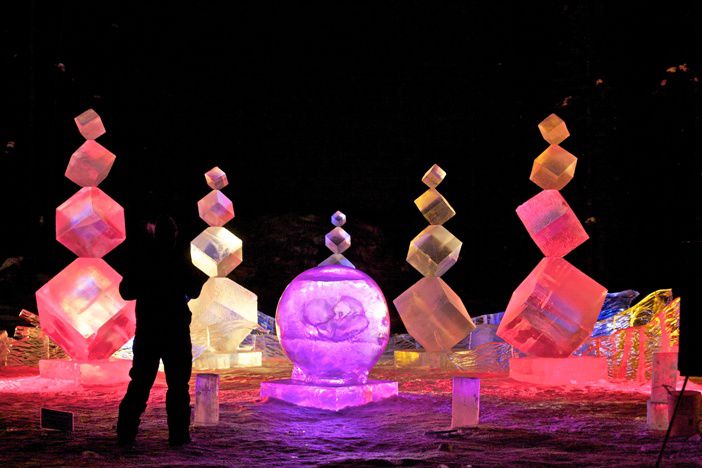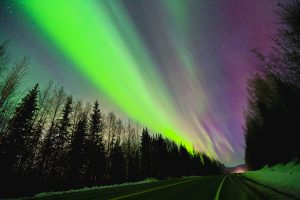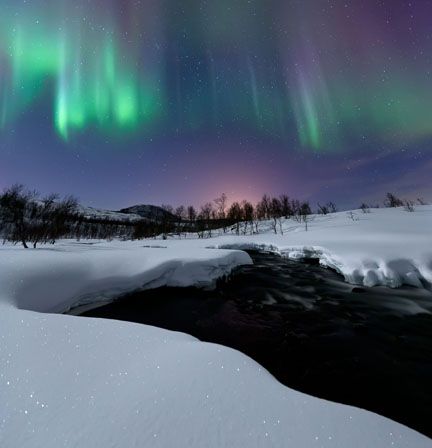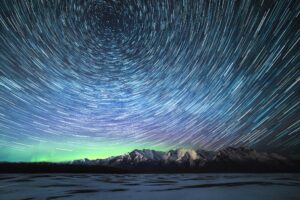
Alaska is one of the best destinations to witness the northern lights. Alaska offers unparalleled access to the show. Positioned within the auroral oval, a region encircling the North Pole, Alaska’s expansive wilderness and minimal light pollution create ideal night sky viewing conditions. From Fairbanks to Anchorage and beyond, numerous vantage points across the state provide front-row seats to the northern lights, drawing visitors worldwide.
Keep reading to find out our recommended spots for catching the northern lights across the state.
Best months to view the northern lights in Alaska
The best time to see the northern lights in Alaska is between September and March. Most travelers coming to Alaska over the winter months know that it can be a gamble to plan a trip around the aurora. Still, dark, clear, and new moon nights present the best opportunities for successful aurora hunting. In terms of optimizing viewing conditions, we recommend visiting during the following months:
- September: This month often marks the beginning of the aurora season in Alaska. The darkness begins to return, and the weather remains relatively clear, providing favorable conditions to witness the northern lights.
- February: During this month, there’s an increased likelihood of clear skies, especially around the equinoxes (late February or early March), which tend to be optimal times for viewing the aurora due to increased solar activity.
- March: Like February, March offers good viewing opportunities for the northern lights in Alaska. The long nights and clear skies contribute to better visibility.
Remember, the appearance of the aurora borealis depends on various factors, including solar activity, darkness and weather conditions. It’s always a good idea to check aurora forecasts and find locations away from city lights for the best viewing experience.
Best locations in Alaska to experience northern lights
Although the northern lights can come out throughout Alaska, the best views are in the northern parts of the state. Remote areas like Fairbanks, Denali National Park and Preserve and Arctic Circle regions increase the probability of seeing the aurora borealis.
These locations benefit from their position within the auroral oval. Moreover, their northern latitude enhances the frequency and intensity of aurora displays during the extended winter nights. The ideal latitude for witnessing the northern lights falls between 60 and 70 degrees north. However, aurora sightings can occur at lower latitudes under heightened solar activity and clear, dark skies.
While you are away from the urban lights, watch for stars along with the northern lights. For additional recommendations on where to stargaze, check out our blog, Your Guide to Stargazing in Alaska, for local favorite places to stargaze and aurora hunt!
Fairbanks
- Ester Dome: A popular spot just west of Fairbanks where you can see unobstructed views of the horizon in all directions.
- Creamer’s Field Migratory Waterfowl Refuge: Located close to downtown Fairbanks and features an open area with low light, perfect for aurora gazing.
- Chena Lake Recreation Area: Allows you to take a short road trip off the Richardson Highway and away from the city lights with plenty of space for roaming and viewing the lights.
Nome
This coastal town in Western Alaska is known for its clear skies, especially during winter, making it a favorable location for observing the northern lights. The combination of its northern latitude and low light pollution contributes to excellent visibility.
Talkeetna
A few hours from Anchorage, Talkeetna offers a good chance of catching the northern lights. Its rural setting and northern location make it an accessible yet remote spot for aurora viewing.
Coldfoot
Far north in Alaska and situated along the Dalton Highway, Coldfoot provides a remote and unique opportunity to witness the northern lights in a pristine Arctic environment. Its isolation and minimal artificial light make it a fantastic spot during peak aurora season.
Science behind the northern lights phenomenon
The northern lights occur because of a collision between charged particles from the sun and gases in the Earth’s atmosphere. This collision primarily happens in the magnetosphere region, influenced by Earth’s magnetic field. The sun constantly emits a solar wind, which is a stream of charged particles. When these particles reach Earth, they interact with gases, predominantly oxygen and nitrogen, in the upper atmosphere. This interaction excites the gases, causing them to emit light. The different colors of the northern lights depend on the type of gas and the altitude at which the collisions occur. This stunning natural phenomenon occurs most in regions near the Earth’s magnetic poles, where the magnetic field is stronger. For additional information about the northern lights, read our blog, 12 facts about the aurora borealis.
Additional ways to improve your northern lights experience
Check Northern Lights forecasts
Once you’re in Alaska, it is best to monitor northern lights forecasts to review the viewing conditions. Below are a couple of trustworthy forecasts to check:
- Space Weather Prediction Center: This forecast estimates the probable location and strength of the aurora. It offers a forecast spanning 30 to 90 minutes regarding the aurora’s location and intensity.
- Geophysical Institute UAF: This daily forecast shows geomagnetic activity for three days and describes where to view the aurora.
Go at the right time
Visitors seeking the best views of the northern lights find prime viewing times during the late evening to early morning hours. Typically, between 10 p.m. and 2 a.m., the chances of witnessing the auroras tend to be higher. However, it’s crucial to check local aurora forecasts and consider factors like weather conditions and geomagnetic activity, as they significantly impact the visibility and intensity of this natural spectacle.
Prepare for extended time outdoors
Pack a camera, a thermos of hot cocoa, and lots of layers to keep you warm, as sometimes you must stay out for a while at your viewing location. You can also pack some hand warmers and simple card games to keep you up because, let’s face it, there’s nothing worse than missing the lights only because you had to retreat inside to the warmth.
Stay at Westmark Hotels
Boost your chances of seeing the northern lights by following these tips and booking your stay at the Westmark Fairbanks Hotel & Conference Center, which provides a wake-up call if the borealis is visible. Not only that, but our central location in Fairbanks offers a good home base for getting out and exploring the wilderness of Alaska.


